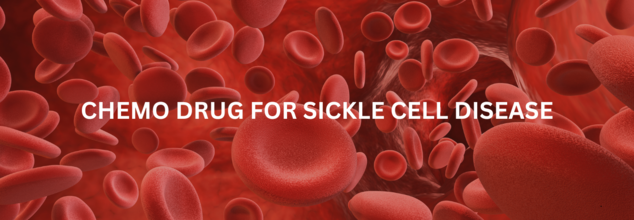- Health Conditions A-Z
- Health & Wellness
- Nutrition
- Fitness
- Health News
- Ayurveda
- Videos
- Medicine A-Z
- Parenting
- Web Stories

Credits: Canva
Depression Rates Surge Globally In Last 10 Years: Study
Depression is emerging as one of the most prevalent mental disorders globally. Cases among the adolescents and adults are on the rise. As per the recent report from the National Center for Health Statistics, the prevalence of depression in individuals aged 12 and older has in fact seen a surge of 60% over the last decade.
The study covered the period from August 2021 to August 2023 and found a 13/1% increase of US population reporting to have experienced depression. This is a significant increased as compared to the 8.2% observed between 2013 and 2014. Experts have advised it to be an alarming trend that reflects a broader global mental health crisis that demands urgent attention.
Has There Been Any Disparities In Depression Numbers?
The study, conducted by Debra J. Brody and Jeffrey P. Hughes of the National Center for Health Statistics, reveals some stark disparities in depression prevalence. Notably, women are more likely to experience depression than men, with 16% of women reporting symptoms compared to 10.1% of men. Depression is also more common among younger people, with nearly 20% of individuals aged 12 to 19 reporting depressive symptoms. In contrast, only 8.7% of adults aged 60 and above experienced depression. Moreover, socioeconomic factors play a significant role, with those living below the poverty line experiencing depression at rates higher than 20%.
How Does It Impact Day-To-Day Life?
The effects of depression can be lasting. It affects not just the person's mental health, but also the ability to function in daily life. As per the study, nearly 88% of individuals with depression report difficulties in their work, home, and social activities due to their symptoms. Despite the widespread impact of depression, a significant portion of those affected do not seek professional help. The study found that only 39.3% of individuals with depression received therapy or counseling in the past year, with women more likely to seek treatment than men (43% compared to 33.2%).
Global Statistics: What WHO Tells
Globally, depression remains a leading cause of disability, affecting approximately 280 million people, according to the World Health Organization (WHO). Women are particularly vulnerable, with depression being 50% more common in women than men. Additionally, depression is a leading cause of suicide, with over 700,000 people dying by suicide every year. The situation is exacerbated in low- and middle-income countries, where more than 75% of people with mental health disorders receive no treatment. Stigma, a lack of trained healthcare providers, and insufficient investment in mental health care contribute to the widespread lack of support.
What Is Depression?
Depression is characterized by persistent feelings of sadness, irritability, and a loss of interest in previously enjoyable activities. Other symptoms include poor concentration, feelings of guilt, disrupted sleep, changes in appetite, and a general lack of energy. These symptoms can last for weeks or even months, severely impacting an individual's quality of life. The WHO categorizes depression into different types, including single episode depression, recurrent depressive disorder, and bipolar disorder, with varying degrees of severity and duration.

Beyoncé’s Mom Tina Knowles Shares Emotional Breast Cancer Diagnosis, How A Missed Mammogram Almost Cost Her Life
When Tina Knowles—entrepreneur, designer, and mother to global superstars Beyoncé and Solange—sat down with Gayle King for an emotional interview on CBS Mornings, her vulnerability struck a chord with millions. The 71-year-old matriarch, known for her strength and elegance, revealed something deeply personal: she had been diagnosed with Stage 1 breast cancer in her left breast, a discovery made during a routine mammogram last year. One of the two tumors doctors found was benign. The other was not.
“I’ve always tried to take care of myself. I just … was in disbelief,” Knowles said softly. Her voice, usually full of conviction, cracked with emotion as she recounted how years had passed since her last mammogram—a delay, she admitted, that was largely due to the COVID-19 pandemic. That pause in care, one she now describes as dangerously unintentional, nearly changed the course of her life.
Routine Check That Came Too Late
Tina Knowles’ story is not uncommon. Like many women juggling work, family, and personal responsibilities, she put off her routine checkup. When the pandemic arrived, so did widespread cancellations of non-urgent medical appointments, including cancer screenings.
“I forgot that I didn’t go to get my test two years before I thought I had,” she admitted. “Covid came, and they called me and canceled me. They said, ‘We’ll call you when we start testing again.’ And I just thought I had done it. So you cannot play around with that.”
By the time she returned for her screening, doctors found two tumors in her breast. One was benign, but the second tested positive for cancer. Knowles was told that if she had come in earlier, the cancer might have been caught at Stage 0—a stage with even higher treatment success and fewer interventions. Thankfully, the tumor was slow-growing, had not spread, and was still considered highly treatable.
In August, Knowles underwent a lumpectomy to remove the tumor, along with a breast reduction. On the day of the surgery, her daughters Beyoncé and Solange, along with close friends, stood by her side, offering strength and comfort.
“I was nervous,” Knowles recalled, but Solange helped lighten the mood by playing a viral internet video about the word “demure.” “We laughed and laughed. I got out of my head. Then I said, ‘I’m just so happy that y’all are here.’”
Her gratitude was palpable. Now declared cancer-free, Knowles says she feels incredibly blessed and credits early detection—and the support of her daughters—for the positive outcome.
Knowles chose to share her story publicly, despite her deeply private nature. It wasn’t just about catharsis—it was a decision rooted in purpose. “I struggled with whether I would share that journey because I’m very private. But I decided to share it because I think there are a lot of lessons in it for other women,” she said.
Her message is simple and clear, do not delay your screenings.
According to the American Cancer Society, one in eight women in the U.S. will develop breast cancer in her lifetime. When detected early at Stage 1 or Stage 0, the five-year survival rate is nearly 100%. Yet screening rates continue to lag, especially after COVID-related disruptions. Some women still haven’t returned to pre-pandemic screening schedules—a delay that could cost lives.
Knowles’ experience underscores the importance of consistency. Even someone who has access to quality healthcare, who is proactive about self-care, and who surrounds herself with resources and information, can fall through the cracks.
Tina Knowles’ influence extends far beyond the red carpet. As a businesswoman and a mentor, she’s shaped culture—and now, she's using her platform to raise awareness about a disease that still claims over 40,000 lives in the U.S. every year.
Her decision to go public also coincides with the release of her memoir Matriarch, in which she opens up about her journey through motherhood, business, and now, health challenges. It’s a reminder that breast cancer doesn’t discriminate by fame, fortune, or age—and that even those who seem larger than life face the same human vulnerabilities as the rest of us.
Tina Knowles is now cancer-free, but she knows her story could have ended differently. Her journey is a cautionary tale with a hopeful ending, reminding women everywhere that early detection can save lives.
“I’m doing great,” she shared. “I’m cancer-free and incredibly blessed that God allowed me to find it early.”

Credits: Canva
Chemo Drug Could Be Effective For Kids With Sickle Cell Disease
A recent study published in Blood Advanced has reaffirmed the long-term safety effectiveness of hydroxyurea. This is an oral chemotherapy drug, which is used to manage sickle disease (SCD) in children. The findings have given a new hope and reassurance to families and caregivers who are trying to wade the waters of this chronic condition.
What Is Sickle Cell Disease?
As per the National Heart, Lung, and Blood Institute, sickle cell disease, also known as sickle cell anemia, is a group of inherited disorders that affect hemoglobin. Hemoglobin is the major protein that carries oxygen in the red blood cells. Usually, red blood cells are disc-shaped and flexible, so they can easily move around the blood vessels. However, in this condition, the red blood cells are misshaped, like a crescent, or "sickle", which is where the disease gets its name from. This happens due to a gene mutation that affects hemoglobin molecule. When red blood cells sickle, they do not bend or move easily and thus can block blood flow to the rest of the body.
People with sickle cell disease could experience onset of strong episodes of pain, also called pain crises.
How Will Hydroxyurea Change The Conditions Of Those With Sickle Cell Disease?
Hydroxyurea, originally developed as a chemotherapy drug, is now a cornerstone in the treatment of SCD. It is taken orally once a day and works by helping red blood cells maintain a more normal, flexible, and round shape. This reduces the likelihood of blockages in the blood vessels.
According to St. Jude Children’s Research Hospital, the drug also helps reduce pain crises, lowers the need for blood transfusions, improves anemia, and cuts down the risk of potentially fatal complications like blood clots in the lungs. Given these benefits, federal guidelines recommend offering hydroxyurea to children with severe SCD starting as early as 9 to 12 months of age.
What Did The Study Find?
The study was conducted by the researchers at Emory University School of Medicine. The study analyzed 2,147 children with sickle cell disease and tracked them between 2010 to 2021. These kids were being treated at the Children's Hospital of Atlanta. Among them, 58% had been prescribed hydroxyurea. The average treatment duration was five years, with some children age 8 or older on continuous therapy throughout the study period.
What Were The Key Findings?
The study found that children who took hydroxyurea had fewer emergency room visits. They also spent fewer days in the hospital as compared to those who did not take the drug. Furthermore, the benefits remained even when researchers adjusted for disease severity and medication adherence.
Dr. Paul George, lead author of the study, emphasized, “Our results reinforce that hydroxyurea...continues to have really important benefits over time for pediatric patients.”
Addressing Safety Concerns
Despite its proven effectiveness, hydroxyurea has faced skepticism due to its origins as a chemotherapy drug. “There have always been some lingering fears about its safety and efficacy, especially for children,” explained Dr. Wilbur Lam, co-author of the study.
However, the long-term data from this study helps to dispel these concerns. Lam added, “This study can provide some reassurance...that this therapy...continues to be a safe option with a true benefit outside of a controlled setting.”

Credits: Canva
Why Heavy Weed Users Are At An Increased Risk For Psychosis?
A recent study published in JAMA Psychiatry, titled, Convergence of Cannabis and Psychosis on the Dopamine System, has identified a direct biological link between cannabis use disorder and an increased risk of psychosis. The research shows that those who heavily use marijuana may have elevated levels of the hormone dopamine in regions of the brain associated with psychosis. This happens especially in the substantia nigra (SN) and ventral tegmental areas (VTA). These are both midbrain structures, crucial for dopamine-related functions, which include motor control, reward processing, and motivation. While they both release dopamine, they have distinct roles and connect to different brain regions. The SN primarily contributes to motor control, while the VTA plays a significant role in reward and motivation.
What Is The Role Of Dopamine In Your Brain?
Dopamine is a key neurotransmitter responsible for regulating mood, motivation, learning, and motor control. An imbalance—particularly excessive dopamine—can disrupt normal brain functions and increase susceptibility to psychiatric conditions, including psychosis.
“Excess levels of dopamine can disrupt normal brain processes and may increase the risk of psychosis, particularly in individuals who are already vulnerable,” explained study co-author Betsy Schaefer, a senior manager of clinical research operations at the London Health Sciences Center Research Institute in Ontario.
How Was The Study Conducted?
In order to look into the connection between cannabis use and dopamine, the researcher used an advanced MRI technique to monitor neuromelanin deposits in the brain. What exactly is neuromelanin? It is a substance that builds up over time as dopamine is broken down. As per a 2016 study published in Trends in Cognitive Sciences, titled The Locus Coeruleus: Essential for Maintaining Cognitive Function and the Aging Brain, neuromelanin plays both roles, as a neuroprotective and neurotoxic roles. It is a pigment which is produced in dopamine-producing neurons and while it can help protect against oxidative stress and excess metals, it can also accumulate and contribute to neuronal damage and disease progressions. These deposits appear as black spots in MRI scans and serve as indicators of dopamine activity.
The study also included 25 individuals who were diagnosed with cannabis use disorder and 36 control participants without the disorder. The researchers were able to find that participants who heavily used cannabis had noticeable neuromelanin deposits in specific regions of the midbrain than their counterparts.
“In people partaking in excess cannabis use, those spots are blacker than what they should be for their age compared to healthy individuals,” said senior researcher Dr. Lena Palaniyappan, adjunct professor at Western University’s Schulich School of Medicine & Dentistry. “This indicates they have high levels of dopamine, and in some cases are showing pigments someone 10 years older would have.”
he key brain regions showing increased dopamine activity—the substantia nigra and ventral tegmental area—have long been linked to the onset of psychosis. According to researcher Ali Khan, assistant professor at Western University, these darker areas were observed in cannabis users regardless of whether they had experienced a first episode of schizophrenia.
“This increase was seen in those with cannabis use disorder regardless of whether they have first-episode schizophrenia,” Khan noted.
With Canada having legalized recreational cannabis use six years ago, the study underscores growing concerns about its long-term mental health impact, particularly on young users.
© 2024 Bennett, Coleman & Company Limited

